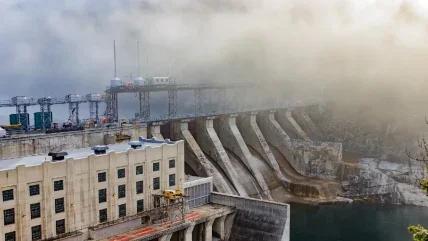
Dam owners carry a great responsibility to keep their dams safe. When resources are limited, they need to determine where and when their safety interventions will achieve the greatest reduction of risk. This can be challenging for owners who manage a portfolio of dams of different ages, types and consequences. Sometimes it is hard to see the bigger picture or determine where interventions will be most effective.
This is where specialist power and water consulting business Entura believes that its dam portfolio risk assessment (PRA) comes into its own and can support dam owners, especially those with a large portfolio of assets, helping them to understand the risk position across their whole portfolio. They can then prioritise where and when to target dam safety works to reduce risk and optimise their investment – rather than allocating resources randomly or equally.
PRAs can also identify knowledge gaps, reveal potential ‘quick wins’, and can be used to review surveillance and monitoring practices relevant to each dam’s risk position and key failure modes. Entura’s PRA process includes:
- Flood hydrology and site-specific seismic hazard assessment.
- Engineering assessment (identifying failure modes and assessing compliance with standards).
- Consequence assessment (assessing social, financial, environmental and other risks).
- Risk assessment (evaluating and aggregating risks against failure scenarios and developing upgrade concepts to reduce risks).
- Reporting.
Entura says the aim is to design and deliver solutions to increase dam safety and reliability, improve dam performance, and extend the life of dam assets. The business is part of Hydro Tasmania and has successfully applied the PRA process to Hydro Tasmania’s portfolio of 43 large dams and its small dam portfolio. It has also worked with other Australian clients such as TasWater and SA Water. Both TasWater and SA Water’s PRAs included 18 large dams of varying types, sizes and ages. The PRAs led to a number of further studies and works to reduce the overall dam safety risks in line with national and international standards, and gave clients the insights necessary to strongly justify their proposed capital works programme and to reduce uncertainties.
Entura has also applied its knowledge of dam safety internationally. For example, it supported the Government of Laos in assessing the nation’s portfolio of 55 dams against Laos’ technical standards and international good practice. Entura assessed 10 out of the 55 dams as part of the government’s dam safety emergency programme following dam failures associated with flooding in 2018. The company was also engaged by the Ministry of Utilities in Sarawak as the independent dam safety engineer during later stages of construction and impoundment for the Bakun Dam and Murum Dam. A dam risk assessment framework was used as the basis for determining each dam’s readiness for impoundment.
Dam safety was also an important element in the development of the proposed design for the Alaoa Dam in Samoa (a multi-purpose dam intended to increase flood protection, ensure secure water supply and generate hydropower), where a dam risk assessment was adopted as an appropriate tool so that important dam safety issues could be identified, focused on and mitigated, whether immediately, during detailed design or as part of the future dam operation and maintenance.
Worldwide, engineers and managers have to keep pace with legislation, regulations and procedures for good-practice dam safety management, which evolve – or are newly developed – in the wake of major dam failures. Even for experienced businesses and workforces, there’s a huge challenge ahead to build and maintain skills, and that challenge is increased in countries where the dam safety regulation journey is just beginning. That’s why Entura is keen to share dam safety experience through short courses and certified training programmes customised to the needs of clients such as the Malaysian National Committee on Large Dams, the Dam Rehabilitation and Improvement Project in India, and dam owners in Sri Lanka, the Philippines and the Mekong region. The courses are delivered by technical experts and qualified trainers in Entura and Hydro Tasmania.
In response to the accelerating global clean energy transition, a new lens is also being applied to dam safety reviews: focusing on risks but also keeping alert to potential opportunities that could optimise upgrades – such as building in extra capacity to mitigate climate risks, or enabling a hydropower dam to operate more flexibly as energy markets transform.
Ultimately, the best way to achieve safer dams is to begin with good design and keep safety and future operations in mind right from the start.






